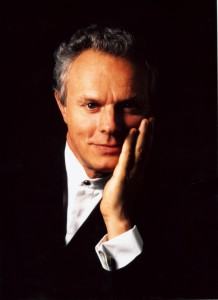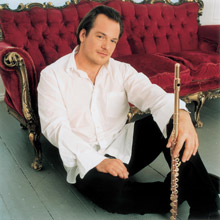UTAH SYMPHONY, Abravanel Hall, Oct. 25; second performance Oct. 26, 8 p.m., tickets at 801-355-2787, 888-451-2787 or www.utahsymphony.org.
On a night when Abravanel Hall was, unfortunately, more than half empty the Utah Symphony with guest conductor Yan Pascal Tortelier and guest piano soloist Orion Weiss turned in another sensitive, technically impressive performance. The sheer number of empty seats, though, is very concerning especially when the recent immense artistic growth of the symphony is considered. The increase in musicianship is not translating into more ticket sales. In this age when orchestras are shutting down all over the country, this should be very concerning to the supporters of this magnificent orchestra. The future financial viability of the organization is called into question on nights like this, but the greater question of the effectiveness of the organization’s community outreach needs to be considered too.
These issues aside, from a purely musical perspective there was a lot to admire. The orchestra was again in top form during works by Paul Dukas and Jean Sibelius, with the latter’s Fifth Symphony sounding particularly inspired. Tortelier seemed to coax these outstanding performances out of the orchestra with an experienced and effortless direction. His gestures were fluid and dynamic, but also had a high level of precision that the orchestra easily tracked.
This is an ensemble that has, in recent years, really found its voice when interpreting Mozart. The performances have previously revealed finely shaped phrases, sensitive dynamics, crackling energy on fast movements, and astonishing beauty during slow movements. The reading of the Piano Concerto No. 25 with Weiss was no different. Weiss conveyed an exceptional clarity to the soloist line and precise timing, and achieved a fine balance with the orchestra.
Performances of this caliber need to reach more people. The entire organization should be feeling the need to innovate its promotions efforts after a night like this. Indeed, this is a problem facing the entire world of classical music. Sure, the music being played may be among the most sublime ever committed to paper. The harsh reality, however, is that something needs to change in order to attract people to concert halls and ensure the long term viability of a community jewel like the Utah Symphony. Smart arts executives should be looking at strategies to entice the younger generations into the concert halls, as these are the people who, frankly, will collectively be deciding the future of our cultural institutions in the not too distant future. Our capitalist economic system can be extremely unforgiving to those who don’t recognize current trends and think through ways of innovating for the future. These issues need to be addressed with a great sense of urgency.


